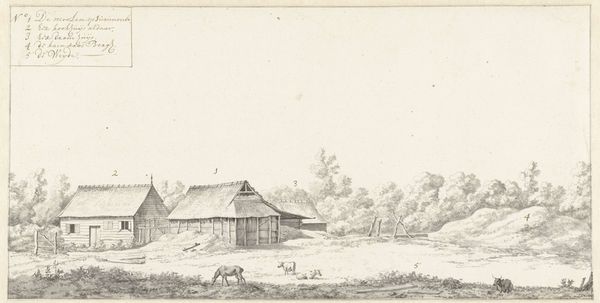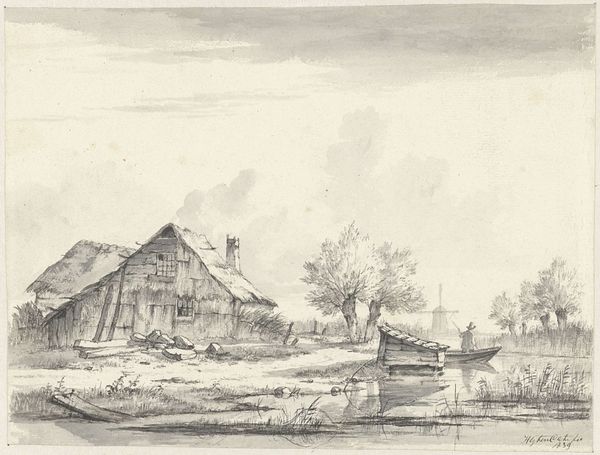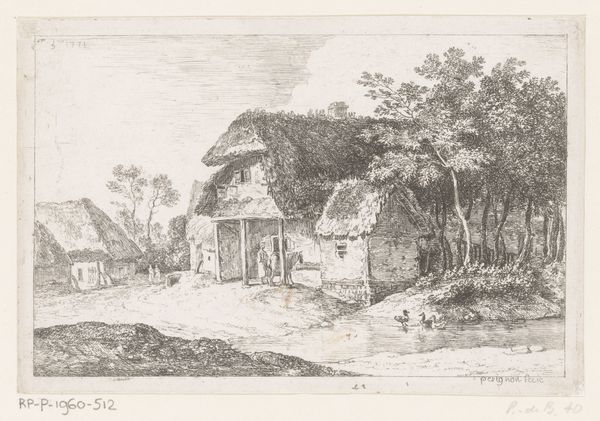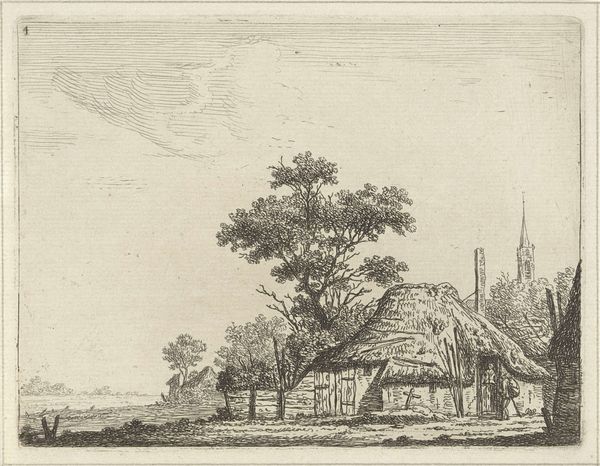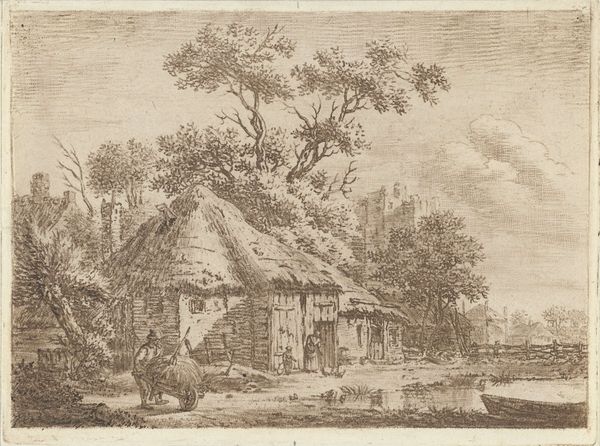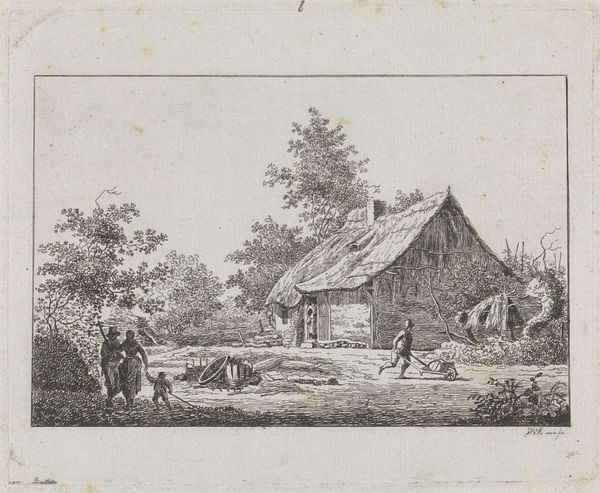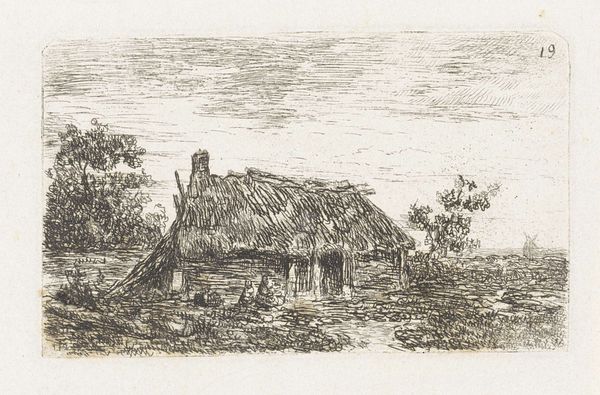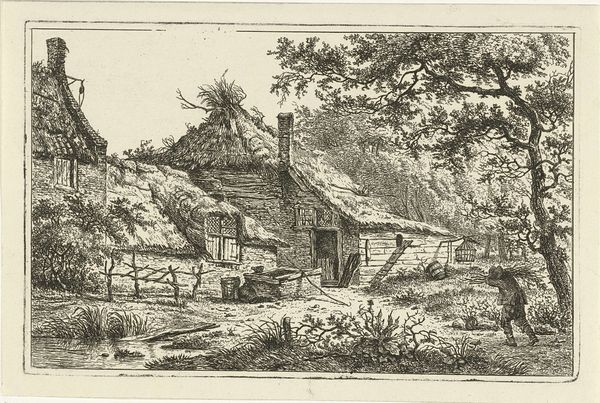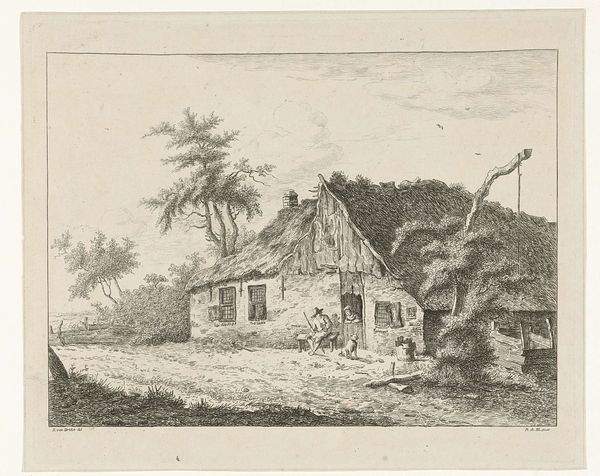
Dimensions: height 170 mm, width 313 mm
Copyright: Rijks Museum: Open Domain
Editor: So, this drawing, "Boerderijen aan het water," or "Farmhouses by the Water," is by Remigius Adrianus Haanen, dating roughly from 1827 to 1894. It’s ink on paper, a landscape…it feels very grounded, solid. What strikes you most when you look at it? Curator: The weight of memory, certainly. These aren't just farmhouses; they are vessels brimming with lives lived. The thatched roofs, rendered so meticulously, feel like protective shells, shielding stories passed down through generations. Notice how the water reflects the structures – doubling their presence, embedding them deeper into the landscape and into our collective visual lexicon. What kind of cultural values are you thinking about when you view such pieces? Editor: That’s interesting. I guess I was just seeing the buildings as buildings, but you're making me think about how they represent family, community…stability. Curator: Precisely! Consider the prominent placement of the hearth, a universal symbol for domesticity and warmth. The artist understands the power of such imagery to evoke feelings of comfort and belonging, transcending specific location. Are there compositional choices, perhaps, that amplify that feeling for you? Editor: The way the farmhouse sort of anchors the composition, with the trees and water surrounding it, creating a sense of enclosure… I see it now. It feels very intentional. It really does seem to point to the continuity you were talking about. Curator: And how that relates to a particular idea of "home". It's fascinating how an image can hold so much emotional and cultural weight, isn't it? The longer one views these visual prompts, the deeper one's insight grows! Editor: Definitely. It’s much more than just a picture of a couple of farmhouses. Thanks for showing me that!
Comments
No comments
Be the first to comment and join the conversation on the ultimate creative platform.

